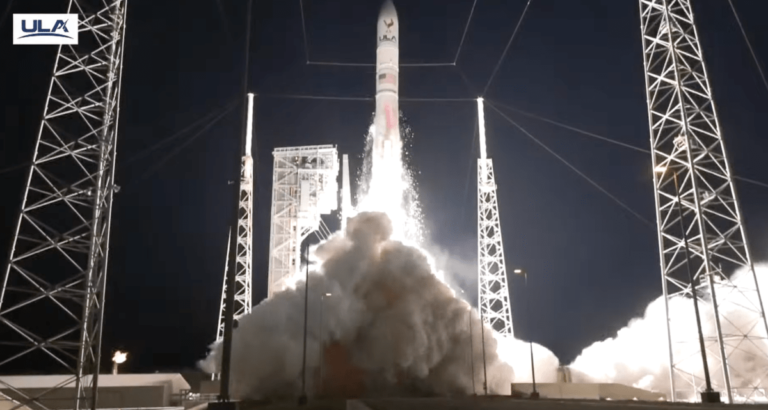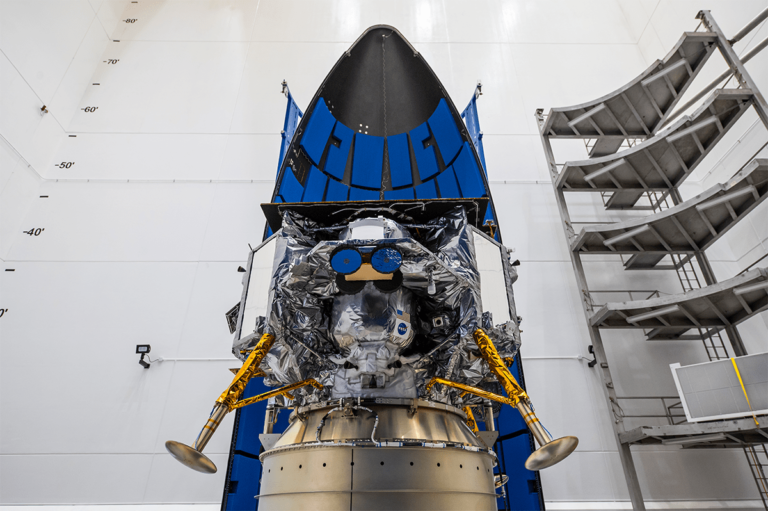
French small launch developer Latitude has closed $30 million in new capital as it eyes the first flight of its Zephyr rocket in 2025.
While other rocket companies are going bigger, developing even more massive rockets, Latitude is taking a different approach: light, small, and hopefully cheap enough to beat out competitors.
Its first rocket, Zephyr, will stand at just 62 feet and will be capable of delivering up to 100 kilograms of payload to low Earth orbit.
The two-stage rocket will be powered by eight 3D-printed engines called Navier, which Latitude is developing in-house.
In a statement, Latitude CEO and cofounder Stanislas Maximin said 2024 would be a “pivotal year” before Zephyr’s first flight in 2025.

In a devastating series of updates earlier today, the Pittsburgh-based startup said a “failure within the propulsion system” is causing a critical loss of propellant.
The propulsion system is a critical component of a spacecraft, but it’s especially important for this mission, which is taking an indirect path to the moon.
NASA, likely sensing the difficulty of a moon landing, has issues awards to multiple companies under the program.
Other awardees include Intuitive Machines, which is set to make its own lunar landing attempt next month, and Firefly Aerospace, which will conduct its first lunar mission later this year.
A deputy administrator from NASA’s Science Mission Directorate, Joel Kearns, said in a statement after launch that “each success and setback are opportunities to learn and grow.

The company’s next-generation rocket Vulcan Centaur successfully lifted off in the early hours of Monday, and its primary payload, a lunar lander from Astrobotic, is now on its way to the moon.
The heavy-lift rocket took off from Cape Canaveral Space Force Center at 2:18 AM EST Monday.
The Centaur executed two more burns to get Astrobotic’s Peregrine lander on the correct trajectory to the moon.
With those complete, the lander, called Peregrine, will now embark on a one-and-a-half month journey to the moon.
The launch and subsequent journey to the moon are a watershed moment for both United Launch Alliance and Astrobotic.

United Launch Alliance’s Vulcan Centaur rocket has been rolled to the launch pad at Cape Canaveral Space Force Station ahead of its early Monday morning launch, a mission that could end with the first fully private spacecraft landing on the moon.
Vulcan’s primary payload is Astrobotic’s Peregrine lunar lander.
The two companies had been targeting a Christmas Eve launch, but ULA decided to postpone due to ground system issues.
“We are ready for launch, and for landing.”ULA and Pittsburgh-based Astrobotic are not the only firms with much riding on Monday’s launch.
That program, Commercial Lunar Payload Services (CLPS), has collectively doled out hundreds of millions to spur private development of moon landers.

Firefly Aerospace sent its Alpha rocket to orbit this morning, with the company carrying a payload from Lockheed Martin to space.
Today’s launch marks the fourth-ever flight of Firefly’s Alpha rocket.
The rocket was carrying Lockheed’s demonstrator payload, called the Electronically Steerable Antenna (ESA) technology demonstrator, to low Earth orbit.
From there, the Lockheed Martin payload should have been deployed.
For that mission, Firefly had just 24 hours to complete final launch preparations, encapsulate the payload and mate it to the rocket.

Astrobotic’s first lunar lander is ready for lift-off.
The company announced Tuesday that the lander, called Peregrine, has completed final checkouts and fueling after it was mated with United Launch Alliance’s Vulcan Centaur rocket last month.
Astrobotic is executing the mission as part of a $79.5 million contract from NASA under the agency’s Commercial Lunar Payload Services (CLPS) program.
Pittsburgh-based Astrobotic is one of a handful of commercial players betting that there will be a thriving market for lunar payload delivery services.
Other companies include Intuitive Machines, which is aiming to launch its first lander just days after Peregrine, on January 12, as well as Firefly Aerospace and Japanese firm ispace, which had a failed lunar launch earlier this year.









